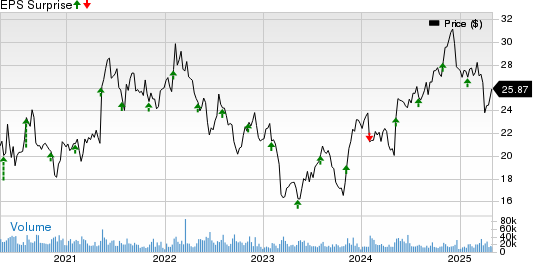Top Tech Stocks to Consider Amid Market Volatility
The recent volatility in the stock market has pushed many technology companies into value territory. For long-term investors, this may provide an opportune moment to accumulate shares in market-leading companies currently trading at attractive valuations.
Here are three leading tech companies worth considering.
1. Nvidia
Nvidia (NASDAQ: NVDA) remains an attractive investment, trading at a forward price-to-earnings (P/E) ratio of under 25 times analysts’ estimates for this year, and a price/earnings-to-growth (PEG) ratio of 0.5. A PEG score below 1 indicates potential undervaluation, which suggests Nvidia’s shares are still a bargain.
Concerns have arisen among investors regarding potential effects from a chip export ban to China and tariffs, as well as worries about a slowdown in data center spending.
Nevertheless, discussions within the sector point to a robust future for data centers. At a recent conference, Amazon expressed confidence in continued growth, and Vertiv and cloud computing giant Alphabet echoed similar sentiments during their earnings calls, highlighting strong demand and existing market capacity constraints.
Nvidia boasts over 80% of the graphic processing unit (GPU) market, vital for AI workloads. Its CUDA software platform creates a competitive edge, featuring libraries and tools that enhance chip performance for AI tasks.
As long as data center investments increase, Nvidia is well-positioned for long-term success.

Image source: Getty Images
2. Alphabet
Alphabet (NASDAQ: GOOGL) (NASDAQ: GOOG) stands out as one of the most reasonably priced mega-cap tech stocks, comprising a range of market-leading and emerging businesses. It is the world’s foremost digital advertiser, owning the leading search engine, Google, and the most popular video platform, YouTube. Additionally, Alphabet controls the third-largest cloud computing company and the rapidly growing robotaxi service, Waymo.
Alphabet has also been a pioneer in developing custom AI chips. Last year, its Willow chip for quantum computing helped overcome a significant challenge in the field, and its latest Gemini AI model has performed exceptionally on independent AI benchmarking platforms.
Despite concerns about AI potentially replacing search functions, Alphabet’s search revenue rose by 10% in the first quarter. Improvements in its AI features have garnered substantial user interest, attracting 1.5 billion AI Overview users monthly. The company maintains that it can monetize AI Overviews similarly to its search model, indicating that traditional search will retain its importance for users and advertisers alike.
With a forward P/E ratio of 17 times, Alphabet stock appears undervalued. Google Cloud and Waymo are expected to drive significant growth, while Google search and YouTube should provide steady income.
3. Taiwan Semiconductor Manufacturing
Taiwan Semiconductor Manufacturing (NYSE: TSM), known as TSMC, is another affordable tech stock, featuring a forward P/E of 17.7 and a PEG ratio above 0.5.
As the leading semiconductor contract manufacturer globally, TSMC produces advanced chips for clients like Nvidia. While some rival foundries have faced challenges, TSMC’s technological expertise and scale have made it a preferred partner for top chip designers, allowing the company to benefit from rising chip demand and enhanced pricing power.
TSCM’s growth is evident from its Q1 results, which showed revenue rising by 35% to $25.5 billion, a gross margin increase of 190 basis points year-over-year, and a 54% surge in earnings per American depositary receipt (ADR).
The ongoing demand from AI infrastructure development keeps TSMC in a strong position. The company collaborates closely with key customers to increase production capacity and is establishing manufacturing facilities worldwide, including in the U.S., solidifying its leadership in the sector.
Conclusion
With growing demand for its services and strong pricing power, TSMC is poised for lasting success.
The views and opinions expressed herein are those of the author and do not necessarily reflect those of Nasdaq, Inc.


